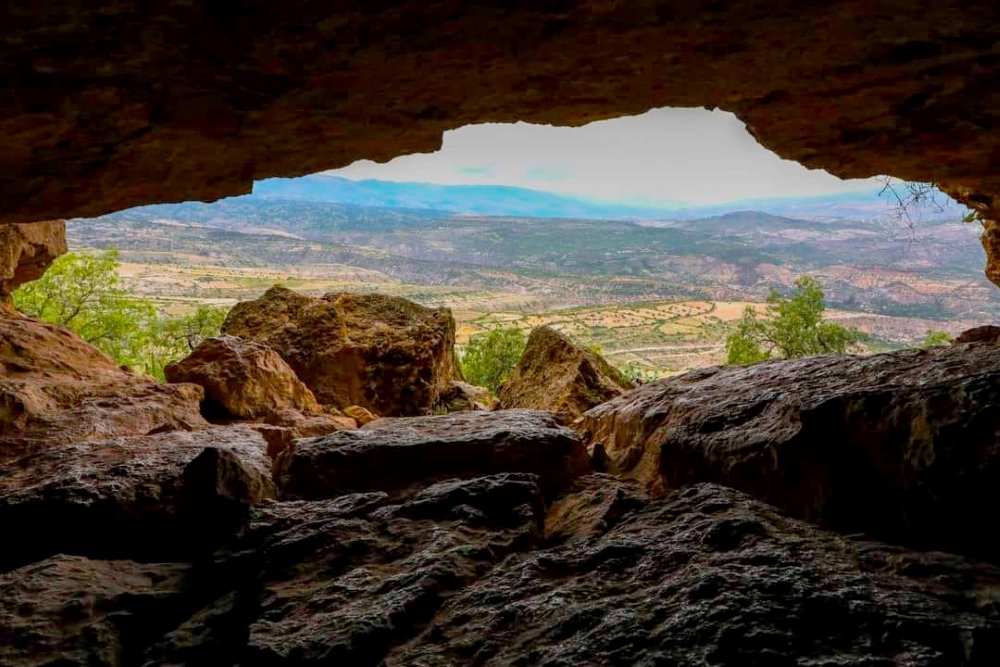The Cave of Pikillacta | Ayacucho
“Pikillacta” is a term that comes from the Quechua language, spoken by pre-Columbian civilizations in the Andean region of South America. In Quechua, “piki” means “flea” and “llacta” means “town” or “city.” Therefore, “Pikillacta” roughly translates to “flea town” or “flea city” in English.
Pikillacta is also the name of an archaeological site located in the Lucre Valley, near the city of Cusco in Peru. It is known for being an important pre-Inca archaeological site dating back to the Wari period, a culture that flourished in the southern Peruvian Andes between 600 and 1000 AD. The site contains a series of architectural structures, such as houses, streets, plazas, and irrigation systems, providing valuable insights into the organization and daily life of the Wari culture.
Pikimachay Cave is located in the region of Ayacucho, in southern Peru. Specifically, it is located in the province of Huamanga, in the central Andes of the country. This province is known for its archaeological relevance and for hosting several important prehistoric and cultural sites. The cave itself is located in a mountainous area, at an altitude of approximately 3,800 meters above sea level.
History of the Pikillacta Cave | Ayacucho
The history of Pikillacta Cave, although not as well-known as the homonymous archaeological site, has its own significance in the region of Ayacucho, Peru.
- Antiquity: Pikillacta Cave has been inhabited by humans since ancient times. Evidence of human occupation dating back thousands of years suggests that it served as a refuge for local populations during prehistoric periods.
- Cultural Context: The cave is located in a region that has been inhabited by various cultures throughout history. These include pre-Inca civilizations such as the Wari and Huari, as well as the Incas and the local cultures that preceded and succeeded these great civilizations.
- Archaeological Research: Although not as extensively studied as other archaeological sites in the region, Pikillacta Cave has been the subject of archaeological research to better understand its history and cultural significance. Artifacts and human remains found have shed light on the lives of the people who inhabited the cave in the past.
- Cultural Importance: The cave is important not only for its antiquity and archaeological value but also for its cultural significance to local communities. It is a place of connection to the past and of respect for ancestral traditions that have shaped the identity of the region.
In summary, the history of Pikillacta Cave is an integral part of the rich cultural and historical tapestry of the Ayacucho region in Peru, and its study continues to provide valuable insights into the human populations that inhabited this area over time.
What to see in Pikillacta Cave?
The Pikillacta Cave is a place of great archaeological and cultural interest in the Ayacucho region, Peru. While it may not be as well-known as other archaeological sites in the region, here are some things you can expect to see and experience if you visit the cave:
- Rock Paintings: The cave may contain rock paintings or other types of prehistoric art dating back thousands of years. These paintings can provide clues about the life and beliefs of the people who inhabited the cave in the past.
- Archaeological Structures: In addition to rock paintings, the cave may contain archaeological structures such as walls carved or modified by humans, remains of dwellings or ceremonial areas, and other vestiges of ancient human occupation.
- Natural Environment: The cave may be located in a stunning natural environment, with panoramic views of the surrounding landscapes. The experience of visiting the cave may include hikes or walks along natural trails that allow you to appreciate the natural beauty of the region.
- Cultural Interpretation: The cave may be accompanied by interpretive panels or guides that provide information about the history, archaeology, and culture of the region. These resources can help you better understand the significance of the cave and its importance to local communities.
Overall, a visit to the Pikillacta Cave can offer a unique experience for those interested in the archaeology, history, and pre-Columbian culture of the Ayacucho region in Peru.

How to get to Pikillacta Cave?
To get to Pikillacta Cave in the Ayacucho region of Peru, you generally follow these steps:
- Arrive in Ayacucho: Most trips to Pikillacta Cave start in the city of Ayacucho, the capital of the region. You can reach Ayacucho by air from Lima or other major cities in Peru, or by land via buses from various cities in the country.
- Local Transportation: Once in Ayacucho, you’ll need to arrange transportation to reach Pikillacta Cave. You may find taxi services, vans, or mototaxis that can take you to the area where the cave is located.
- Local Guide: It’s recommended to hire a local guide or a tour agency in Ayacucho to organize your visit to Pikillacta Cave. Local guides can provide you with information about the route to take, precautions to consider, and the history and culture of the cave and its surroundings.
- Hiking or Trekking: You may need to hike or take a short trail from the area where you’re dropped off by transportation to reach the cave. Make sure to wear comfortable footwear and bring enough water to stay hydrated during the hike.
- Respect for the Environment: When visiting Pikillacta Cave, it’s important to respect the natural and archaeological environment. Avoid leaving trash behind or damaging any structures or rock paintings you may encounter in the cave, and follow the instructions of local guides to ensure a safe and respectful visit.
By following these steps and considering local recommendations, you’ll be able to reach Pikillacta Cave and enjoy its rich history and natural beauty.












